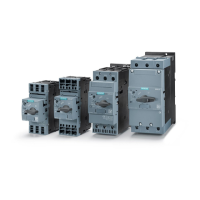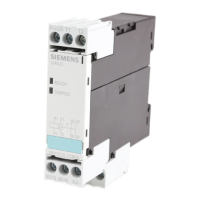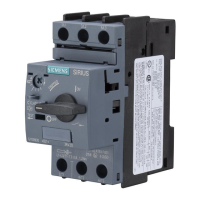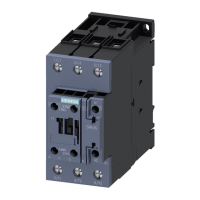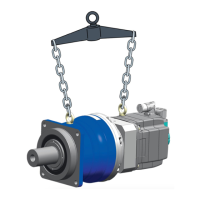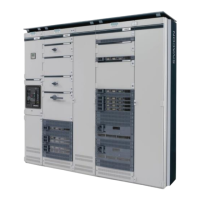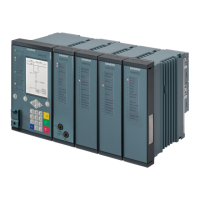SIRIUS 3RV2 motor starter protectors
4.5 Configuration
SIRIUS Innovations
400 System Manual, 01/2011, A8E56203870002-03
Practical example
In a system supplied by an inverter with a 3 kHz pulse frequency, the motors are connected
with cables measuring 80 m in length. An analysis of the actual current flow shows that very
high-frequency currents (up to 150 kHz) are superimposed on the motor current with a peak
value of 1.5 A. In the case of these frequencies, the effect on the thermal overload release is
significantly greater than described in The effects of high-frequency cu
r
rents on the thermal
overload release (Page 398). Furthermore, capacitive leakage currents o
ccur in this system
due to the cable length and the high frequency. These increase the current flowing through
the release and cause undesirable tripping.
An alternative approach is described below for cases in which high-frequency currents
significantly higher than 16 kHz occur and the procedure described in The effects of high-
frequency currents o
n the thermal overload release (Page 398) no longer rectifies the
problem. Wh
en the motor is operating without overload, the overload release has to be set
so high that it will not trip. Once the motor has been running for approx. 1.5 hours at full load,
the overload release has to be reduced to the tripping limit and then this limit set value has to
be increased by approx. 10%. This compensates the effects on the system. The value
hereby obtained can also be used as the correction factor for similar systems.
4.5.13.3 Speed control of motors with characteristic-controlled frequency converters
With adjustment to linear voltage frequency characteristic and continuous boost, a reduction
in speed (< 50 Hz) combined with constant load torque can cause the motor current to
increase. The reason for this is that in the case of this adjustment the reduction in the output
voltage of the frequency converter is not in line with the output frequency.
Should this lead to undesirable tripping, and if this cannot be compensated by adjusting this
release to a higher value (taking the motor overload into account), minimizing boost or
switching to a quadratic voltage frequency characteristic may provide a remedy.

